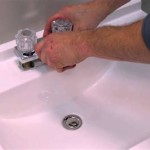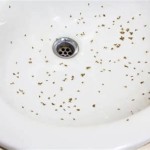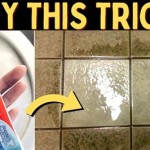Essential Aspects of Reducing Bathroom Moisture Content
Bathrooms are inherently moist environments due to showers, baths, and other water-related activities. Excessive moisture can lead to various problems, including mold growth, mildew, and structural damage. To maintain a healthy and comfortable bathroom, it is crucial to understand and implement effective measures to reduce moisture content.
Ventilation
Adequate ventilation is paramount for moisture removal. Ideally, bathrooms should have an exhaust fan that vents directly to the outside. The fan should be turned on during and after showering or bathing to draw out moist air. If an exhaust fan is not available, open a window or door to provide cross-ventilation and allow moist air to escape.
Moisture-Resistant Materials
Using moisture-resistant materials in the bathroom can significantly reduce the risk of moisture-related issues. Tiles, vinyl flooring, and mold-resistant paint are excellent choices for surfaces that are exposed to water. These materials prevent moisture from penetrating and absorbing into the walls or flooring, minimizing the likelihood of mold growth.
Shower Curtains and Enclosures
Shower curtains or enclosures prevent water from splashing onto the floor and walls, reducing moisture levels. Choose materials that are mildew-resistant and easy to clean. Regularly wash shower curtains to remove any accumulated mold or mildew spores.
Regular Cleaning
Keeping the bathroom clean and dry is essential for moisture control. Clean surfaces with a moisture-absorbing cloth after showers or baths. Remove any standing water from the sink, bathtub, and shower. Regularly clean showerheads, faucets, and other fixtures to prevent mold buildup.
Dehumidifiers
In particularly humid environments or bathrooms without adequate ventilation, dehumidifiers can be used to remove excess moisture from the air. Dehumidifiers collect moisture and store it in a tank that needs to be emptied periodically.
Avoid Drying Clothes in the Bathroom
Hanging wet clothes or towels in the bathroom significantly increases moisture levels. Instead, use a clothesline or dryer to dry laundry. If drying clothes in the bathroom is unavoidable, ensure proper ventilation is provided.
Inspect for Leaks
Regularly inspect plumbing fixtures, pipes, and the roof for any leaks that may contribute to excessive moisture. Even small leaks can add moisture to the air and lead to mold growth over time. If a leak is detected, repair it promptly to prevent further moisture buildup.
By implementing these essential measures, you can effectively reduce moisture content in your bathroom, creating a healthier, more comfortable, and less moisture-prone environment.

Reduce Condensation In Your Bathroom Peter Cox Blog

10 Ways To Reduce Humidity In The Bathroom Point2 News

How To Deal With Bathroom Condensation Big

How To Reduce The Bathroom Water Usage

How To Reduce Moisture In The Bathroom

How To Reduce Moisture In The Bathroom

How To Reduce Moisture In The Bathroom

How To Stop Condensation In Your Bathroom Knb Ltd

How To Prevent Bathroom Condensation Ideas Heatandplumb Com

6 Bathroom Ventilation Tips How To Keep Moisture At Bay Homeserve Usa
Related Posts







